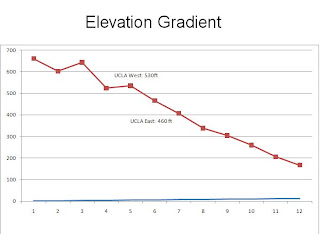
Native American & Alaskan:

Asian:

Write up:
The three maps shown below are based on the 2000 United States Census Bureau data. I created three figures that show the distribution of Africans, Asians, and Native American&Alaskans as a percentage of counties in the United States.
Based on the census’ data, a high percentage of Asians are most likely to be found in coastal counties with a large metropolitan city. Seattle, the San Francisco Bay Area, Los Angeles, and Boston are the most visible areas of Asian density on the map. These cities were probably the port cities Asian immigrants came through to get into the United States. They were attractive because of unskilled job opportunities and offered a sense of lingual community (i.e. Chinatowns and Little Saigon). It should also be noted that the maps are based off of percentages. Therefore, a county that is comprised of 25% Asians in California is likely to have a lot more Asians (by number) than a 25% Asian county in Kansas.
The map of Native Americans and Alaskans as a percentage of county is especially interesting. Although they lived here the longest—they are the least spatially diverse. Since the map only includes the continental United States, a safe assumption would be that most of the data is for the concentration of Native Americans by county. The “Four Corners” region along the Utah, Arizona, New Mexico, and Colorado border is where the highest percentage of Native Americans are largest. All significant Native American/Alaskan percentages are found west of the Louisiana Purchase—visible effects of our country’s history. In fact, large percentage differences between bordering counties (i.e. in South Dakota and Montana) point to random high density areas. For this reason, I think many of these areas contain Indian reservations. Another area of interest is on the eastern Oklahoma border—why do more Native Americans reside in Oklahoma than in Arkansas? One possible theory is that Oklahoma has laws that favor Native Americans.
Africans are concentrated in the southern United States (i.e. Mississippi, Louisiana, and Alabama). However, Africans are also a large percentage of people by county spanning from Texas to Maryland. Presumably, these southern regions are highly populated with Africans because these regions were dependent on slave labor. Another interesting fact about the maps is that the highest value for Africans as a percentage of county was much higher than the other two races (~85%).
One distinct pattern between all three maps was that races tend to stay where they are—or more simply, diffuse slowly across the US landscape. This may be caused by poverty (no finances to relocate), status quo (easier to stay with the norm than change), and cultural values (live with other people of same ethnicity/language).
Prior to taking this class, I knew very little about GIS except that it was useful in analyzing a wide range of issues. After learning about it—especially in these past two labs—it is apparent that GIS makes analyzing data much, much easier. However, as a first time user, ArcMap still seems very complicated. It is not the most user friendly software but I think it would be much easier with practice. Learning ArcMap seems like I’m learning a new language—I know a little bit, but I know there’s a whole lot left to learn. On a side note, I’m curious to know how many of the original input files that we used in lab were created.




















